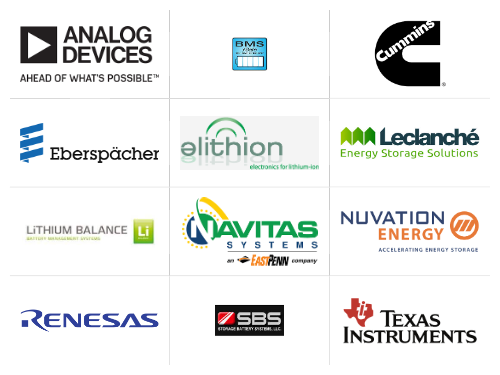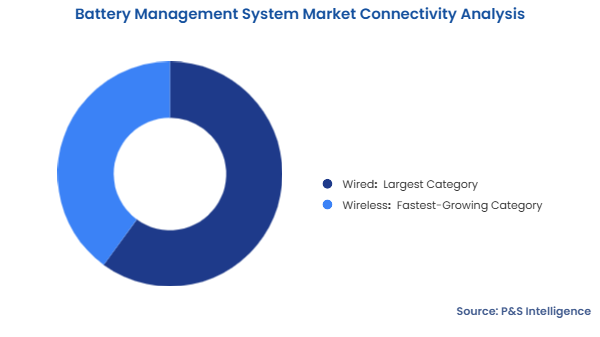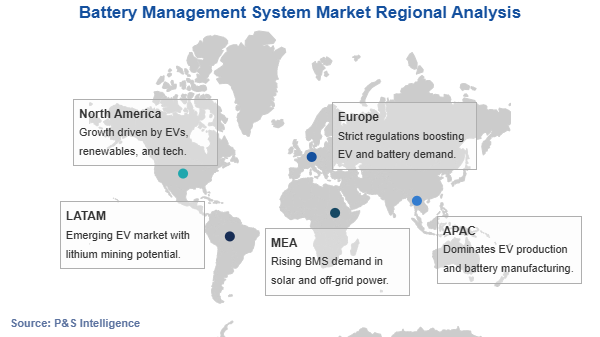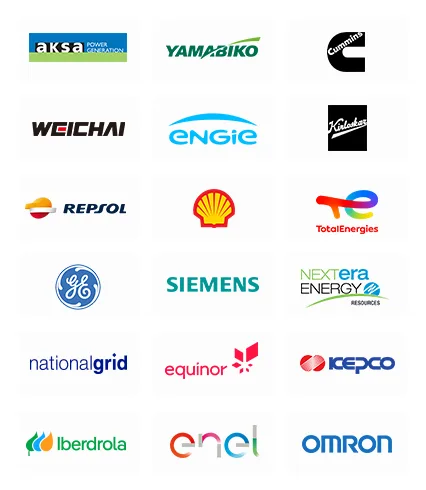Market Statistics
| Study Period | 2019 - 2032 |
| 2024 Market Size | USD 13.4 Billion |
| 2025 Market Size | USD 15 Billion |
| 2032 Forecast | USD 36.1 Billion |
| Growth Rate (CAGR) | 13.4% |
| Largest Region | APAC |
| Fastest Growing Region | APAC |
| Nature of the Market | Fragmented |
Report Code: 11819
This Report Provides In-Depth Analysis of the Battery Management System Market Report Prepared by P&S Intelligence, Segmented by Battery Type (Li-Ion, Lead-Acid, Nickel), Connectivity (Wired, Wireless), Topology (Distributed, Modular, Centralized), Vertical (Automotive, Consumer Electronics, Industrial, Aerospace & Defense, Telecommunications), and Geographical Outlook for the Period of 2019 to 2032
| Study Period | 2019 - 2032 |
| 2024 Market Size | USD 13.4 Billion |
| 2025 Market Size | USD 15 Billion |
| 2032 Forecast | USD 36.1 Billion |
| Growth Rate (CAGR) | 13.4% |
| Largest Region | APAC |
| Fastest Growing Region | APAC |
| Nature of the Market | Fragmented |


|
Explore the market potential with our data-driven report
The global battery management system market is valued at USD 13.4 billion in 2024, and it is expected to reach USD 36.1 billion by 2032, growing at a CAGR of 13.4% between 2024 and 2032. This is primarily attributed to the increasing demand for electric vehicles and the rising usage of rechargeable batteries in consumer electronics. The world's transition to sustainable energy systems and clean energy creates rising demand for effective battery control solutions across automotive industries and consumer electronics, as well as power storage and factory operations.
The market expansion moves forward because consumers worldwide are increasingly purchasing EVs. According to the International Energy Association, in 2023, global electric car registration reached almost 14 million, which increased the total vehicle count to 40 million. Governments implement strict carbon emission standards and provide EV incentive programs to drive up production numbers of electric vehicles. The demand for BMS systems directly reflects the growth rate of the EV market because BMS elements are fundamental for improving battery performance along with extending product lifespan and maintaining safety.
The battery management system aids the successful administration of electric grids. The mechanism aids in shielding or guarding against harm to the battery. Moreover, governments around the world have stringent policies in place to minimize greenhouse gas emissions, as well as campaigns to promote awareness about the harmful effects of conventional fuels and an alternative that they are providing, which are electronic automobiles and hybrid electric vehicles. Manufacturers have begun to include battery management in cars to maximize battery storage capacity and eliminate difficulties caused by failing batteries in electric and hybrid vehicles.
The growth of renewable energy systems that use solar and wind power requires energy storage solutions. According to the International Energy Association, global renewable electricity production will reach more than 17,000 terawatt-hours (TWh) during the next decade which equals a 90% growth compared to 2023 values. A battery management system serves as an essential factor for optimally operating energy storage system batteries and delivering dependable power delivery which strengthens electricity grid stability.
The li-ion category is the largest and expected to grow at a CAGR of 15% during the forecast period, mainly because Li-ion batteries have several advantages over other battery types, such as a longer life cycle, higher energy density, lower maintenance requirement, and better resilience. Furthermore, Li-ion batteries are eco-friendly, as they contain relatively lower levels of toxic heavy metals when compared to other battery types, such as lead–acid and nickel–cadmium (Ni–Cd).
In addition, the output of lithium-ion batteries is expected to increase from 450 GWh in 2021 to 1,450 GWh in 2025, because of their high-power density, minimal self-discharge, and low cost. Also, due to these factors, Li-ion batteries are a potential alternative for electric car batteries and other uses.
Furthermore, the fast development of the automotive and consumer electronics sectors in China and other European nations is encouraging BMS use. Despite their superior energy density, Li-ion batteries have disadvantages, particularly in terms of safety. Also, Li-ion batteries overheat or fail at high voltages, and their storage capacity declines with age, finally failing after a few years of operation. Each battery pack must include electronic battery management to guarantee safe and efficient operation.
Battery types studied in the report:
The wired battery is the largest category in 2025. Wired battery management systems lead the market because they remain the standard solution in electric vehicles (EVs), energy storage systems and industrial applications. Established thanks to their cost-effectiveness and reliability wired BMS solutions present the most popular option when managing battery packs in extensive deployments. Market leadership is attributed to their reliable data transmission capabilities while avoiding interference in the system.
The wireless connectivity is the fastest-growing category as it is expected to grow at a CAGR of 16% during the forecast period. This is because of wireless communication technology improvements and the rising need for lightweight adaptable battery systems. The wireless implementation of BMS creates simplified cabling systems that facilitate weight reduction while enabling high scalability so it works perfectly for electric vehicles and renewable storage and factory systems. Major automobile producers and energy corporations are investing in wBMS to enhance battery functions, simplify installation steps, and enable real-time monitoring systems. The wireless BMS system will experience quick adoption combined with substantial market growth during the upcoming years because of ongoing innovation.

The connectivies under study:
The modular topology category is projected to witness the fastest growth of CAGR 17% during the forecast period. Most of the manufacturers desire modular topology, as it is safe and offers significant computational power, as it does not need extensive wire harnesses. Modular topology is also suitable for a range of applications, such as in industrial UPS, energy storage systems, parts of electric vehicles, medical mobility vehicles, and drones. Thus, the increasing demand for modular topology from these applications is projected to drive the market during the forecast period.
The centralized topology category accounts for the largest share. A single controller board is directly linked to each battery pack cell in the centralized system. Many wire harnesses are often utilized to route voltage levels for all cells in the battery, as well as temperature sensors dispersed throughout the battery. These battery management solutions, however, are not expandable. The centralized architecture is often cost-effective; however, it is not scalable.
In addition, connecting all of the cells to the controller board may necessitate a considerable number of cables. The centralized architecture is appropriate for battery packs with a limited number of cells. The centralized BMS is mostly used in medium-power applications like e-bikes, portable electronics, portable medical equipment, household appliances, and so on. Centralized architecture provides the maximum processing power and is the most cost-effective topology.
The topologies analyzed in the report:
The consumer electronics category is the largest as it generated USD 7 billion in 2024. This dominance is due to the surging adoption of EVs globally. Many governments across the world are introducing policies to promote the manufacturing and usage of EVs. Since it is an important part of EVs, the market will be impacted positively by the surging environmental concerns and the resulting adoption of such new-energy automobiles.
Furthermore, governments are taking initiatives to promote EVs to reduce the emissions from petrol and diesel vehicles. For instance, the Government of India has launched the faster adoption and manufacturing of electric vehicles scheme in two phases to support 1 million two-wheelers, 500,000 three-wheelers, 55,000 four-wheelers, and 7,000 buses.
The verticals considered during the study:
Drive strategic growth with comprehensive market analysis
Asia-Pacific held the largest share of 40% in 2024. This is attributed to the surge in demand for battery management from automotive applications such as electric automobiles, e-bikes, and automated guided vehicles. In these applications, high-energy-density lithium-ion batteries with hundreds of cells stacked in series are employed. To avoid vehicle failure, these cells must be maintained and regulated, making the system a critical component in the electric vehicle design. The system determines the battery's utilization, safety, and performance. It also increases battery life and vehicle range.
Further, China leads the APAC market as it is a major hub of automotive manufacturing. The country's market is being driven by a rise in the manufacturing of automobiles and batteries used in vehicles. Furthermore, China is a world leader in the production of electrical equipment. This is expected to fuel product demand across a wide range of applications.

The regions analyzed in the report:
The battery management system market operates in a fragmented in nature because the market environment where multiple companies compete between automotive industries together with consumer electronics sectors and industrial applications and telecommunication and aerospace sectors. Texas Instruments and Analog Devices function alongside Renesas Electronics Corporation as multinational corporations, while Nuvation Energy, Elithion Inc., and BMS Powersafe provide specialized BMS services that display an extensive competitive marketplace. The market lacks a dominant player because various companies concentrate on different sectors which include EVs and renewable energy storage systems alongside industrial automation solutions.
The BMS market remains fragmented because technological progress and evolving industry needs push it in new directions. New market competitors emerged because of AI-powered battery monitoring together with IoT-based remote diagnostics and wireless BMS solutions which allowed them to develop specialized solutions. Customized BMS solution requirements from governments who promote electrification and energy efficiency drive market expansion which stops the industry from consolidating.
Want a report tailored exactly to your business need?
Request CustomizationLeading companies across industries trust us to deliver data-driven insights and innovative solutions for their most critical decisions. From data-driven strategies to actionable insights, we empower the decision-makers who shape industries and define the future. From Fortune 500 companies to innovative startups, we are proud to partner with organisations that drive progress in their industries.


Working with P&S Intelligence and their team was an absolute pleasure – their awareness of timelines and commitment to value greatly contributed to our project's success. Eagerly anticipating future collaborations.
McKinsey & Company
IndiaOur insights into the minutest levels of the markets, including the latest trends and competitive landscape, give you all the answers you need to take your business to new heights
We take a cautious approach to protecting your personal and confidential information. Trust is the strongest bond that connects us and our clients, and trust we build by complying with all international and domestic data protection and privacy laws
Customize the Report to Align with Your Business Objectives
Request the Free Sample Pages